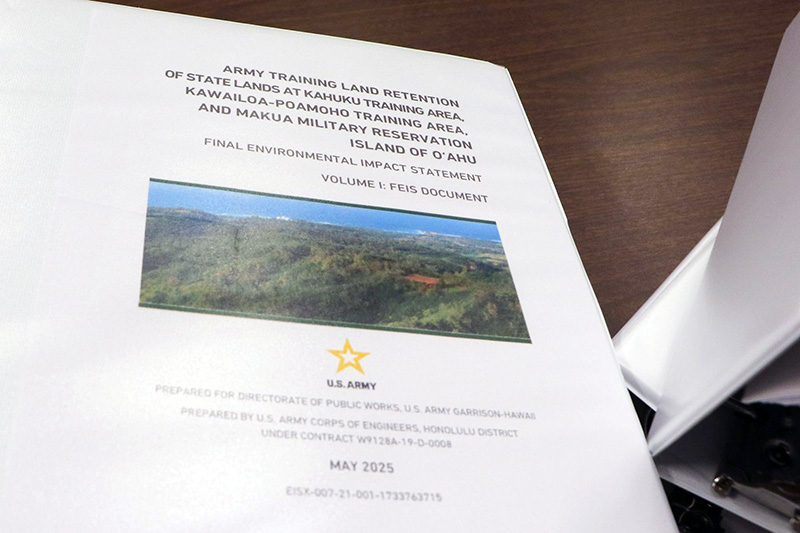HONOLULU – For the second time in as many months, the Hawaiʻi Board of Land and Natural Resources (BLNR) has voted not to accept a U.S. Army Final Environmental Impact Statement (FEIS) for the retention of state lands. Today’s decision specifically pertains to state-leased portions of the Kahuku Training Area (KTA), the Kawailoa-Poamoho Training Area (Poamoho), and the Mākua Military Reservation (MMR) on Oʻahu. The vote followed hours of impassioned public testimony, predominantly in opposition to the Army’s FEIS.
This Oʻahu decision closely follows the BLNR’s highly publicized May 9, 2025, vote to reject the Army’s FEIS for the Pōhakuloa Training Area (PTA) on Hawaiʻi Island. In the Pōhakuloa case, the BLNR cited similar concerns, including an incomplete inventory of archaeological sites, a lack of data and analysis regarding endangered biological resources, inadequate consultation for the cultural impact assessment, and insufficient evaluation of contamination risks to groundwater. The lease for 23,000 acres at Pōhakuloa is also set to expire in 2029.
DLNR Chair Dawn Chang reiterated the legal basis for the recent rejections. “The action before the BLNR was whether to accept or non-acceptance of the FEIS based upon specific legal criteria set forth in Hawaii Revised Statutes Chapter 343 and relevant administrative rules. Applying the legal criteria to the FEIS, reviewing hundreds of written and oral testimonies, as well as comments from DLNR’s own divisions, the BLNR members voted to not accept the FEIS,” said Chair Chang regarding today’s Oʻahu decision. “The FEIS did not meet that bar.”
DLNR’s Land Division (LD), in consultation with multiple other departmental divisions including the Commission on Water Resources Management (CWRM), the Division of Aquatic Resources (DAR), the Division of Forestry and Wildlife (DOFAW), the Office of Conservation and Coastal Lands (OCCL), and the State Historic Preservation Division (SHPD), had recommended non-acceptance. The consensus among these divisions was a clear lack of baseline data, which prevents DLNR and the BLNR from adequately determining and understanding the extent of impacts to natural, historical, and cultural resources.
Specific areas where staff found the Oʻahu FEIS deficient included:
- Inadequate accounting for known and likely archaeological sites.
- Lack of recent data for biological resources.
- Absence of stream aquatic surveys.
These concerns had been raised during the draft EIS phase but remained unaddressed in the final report, similar to the issues identified in the Pōhakuloa FEIS.
It’s important to note that an FEIS is intended solely to support informed decision-making and does not, by itself, authorize any land use. Should the Army bring a request for land use before the BLNR in the future, a separate review and determination would be required.
The Army’s current lease for more than 6,000 acres of state-owned land at the three Oʻahu sites (KTA, Poamoho, and MMR) is set to expire in 2029, the same year as the Pōhakuloa lease. These consecutive rejections of the Army’s FEIS documents signal a firm stance from the BLNR on the need for comprehensive environmental and cultural impact assessments before continued use of state lands for military training.


